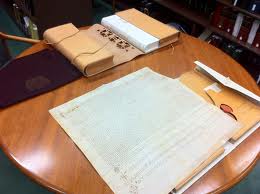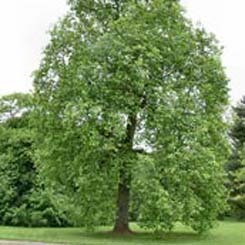
- Capital City:
- Indianapolis
- Nickname:
- Hoosier State
- Motto:
- The Crossroads of America
- Statehood:
- December 11,1816 (19th)
- Origin of State's Name:
- "Land of the Indians."
- Largest Cities:
- Indianapolis, Fort Wayne, Evansville, Gary, South Bend
- Border States:
- Illinois, Kentucky, Michigan, Ohio
- Land Area:
- 35,870 sq. mi., 38th largest
- State Bird:
- Cardinal
- State Flower:
- Peony
- State Tree:
- Tulip tree (liriodendron tulipifera)
- State Song:
- On the banks of the Wabash
Indiana means "land of the Indians." It joined the Union in 1816 as the 19th state. Today, Indiana is a state of mostly small towns and midsize cities. Its largest city and capital is Indianapolis, where the nation's most famous auto race, the Indianapolis 500, is held each year. The state's residents are commonly referred to as "Hoosiers" although no one seems certain just how the name originated. The peony is the state flower.
Hoosier Hysteria: Indiana High School Basketball
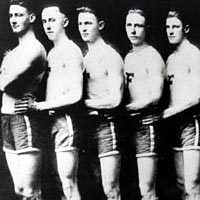
In the Hoosier state, basketball is Indiana's game. There may be more basketball goals per capita than any other state. In fact, one was erected in the driveway of the governor's executive mansion. In Indiana, high school basketball is a passion. The fruits of that passion are the thousands of first-rate high school basketball players the state has developed since the 1940s.
This legacy project chronicles the significant events, teams and monuments in Indiana high school basketball with videos: from the Indiana High School Athletic Association of the 1954 Boys Basketball Final, the 1999 Boys and Girls Tournaments of Champions Finals; the 1989 Girls Basketball State Championships, and others; and also a movie video, Indiana's Game, about the state's high school basketball; and the book Broc: the Littlest Champion, at five feet seven who played for the Evansville Bosse Bulldogs, "who out dribbled, out maneuvered, and outsmarted nearly all competition." The legacy is also documented with materials submitted by individual high schools throughout Indiana which include narratives, newspaper clippings, photographs, letters written by Hoosier basketball fans recalling their memories of Indiana high school basketball; and photographs and memorabilia submitted by the Indiana Basketball of Fame.
Racing Capital of the World
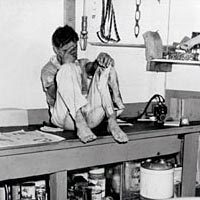
The world's oldest and most famous auto racing track opened in 1909, due to the vision of Indianapolis businessman Carl Fisher and his partners.
Fisher, a former bicycle racer, then car racer, saw the need for a huge "speed facility" where car manufacturers could test and race their vehicles. It also could indirectly benefit his business, the Fisher Automobile Company, which sold cars, as well as make a profit for the track's owners. At that time, 36 firms built cars in Indiana, of which ten were located in Indianapolis.
Four 80-acre tracts of farmland were purchased for the track in 1908, and Indianapolis Motor Speedway was incorporated the following year. The first speedway event was a balloon race on June 5. After being postponed because the track was not ready, the auto races were held from August 19 to 21, and attracted 75,000 fans. Sixteen types of cars, including 19 Stoddard-Daytons and 15 Chalmer-Detroits, were entered. The first automobile race consisted of two laps or five miles. It was open to stripped chassis machines with a 161-220 cubic inch engine piston displacement. The first winner was Louis Schwitzer. In 1910, Fisher agreed with his partners that 500 miles would make the perfect race. Formula One racing was introduced at the Indianapolis Motor Speedway in 2000.
Chelsea Jubilee
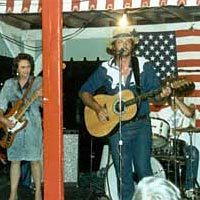
The Jubilee festival has been celebrated in Saluda Township of southern Jefferson County for 133 years, and recent evidence may point even further back to a pre-Civil War origin. The Chelsea Jubilee began as a celebration of farmers, agriculture, and the harvest, with a decidedly religious flavor. Moving many times over the years, the Jubilee relocated in 1973 to its permanent home on a six-acre grove in Chelsea Corner, Saluda Township, and built some permanent buildings on the Jubilee site. At the same time, the Jubilee's focus switched to entertainment, crafts, food, and children's games. Today, Saluda Township has only 474 housing units, and with the passage of time, many of the community civic organizations have disappeared, as have the post office, schools, churches, grocery stores, filling stations, restaurants, and most other businesses. Yet the Jubilee still affords the people of southern Jefferson County, Indiana, an opportunity to return to their roots, cultivate former acquaintances, and renew friendships.
Columbus: The Athens of the West
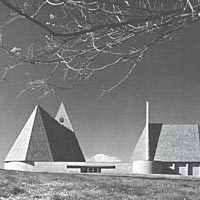
This small city of 37,000 has been lauded by architects and urban planners as among the top six most beautiful cities in the United States. Civic, community and business leaders believed that a "good city" that provides a desirable quality of life "must also look good."
Although the community has buildings from the 1860s, it is the city's 20th century architecture that has attracted attention. The first modern building of note is the 1942 construction of the First Christian Church, designed by Eliel Saarinen. Among other distinguished structures that followed are a school designed by Richard Meier, a library designed by I.M. Pei, a bank and church designed by Eero Saarinen, a golf course designed by Robert Trend Jones with a Harry Weese club house, a fire station designed by Robert Venturi, a mall designed by Cesar Pelli, and a hospital designed by Robert A.M. Stern.
Articles describing the city's architecture have appeared in National Geographic, the Washington Post, Time Magazine, Fortune, the New York Times, and others. Many of the buildings resulted from the philanthropy of Columbus-based Cummins Engine Company. The company's foundation offered to pay the architect fees for any new schools designed by an architect selected from a list selected by the foundation. The successful program was expanded to include other public buildings.
Woven into the fabric of city's architecture is a variety of art, which include sculptures by Henry Moore, Jean Tinguely, J. Seward Johnson and Richard Bauer. The visitor center, which was developed during the 1960s when citizens noticed that people were visiting Columbus to see its eminent architecture, displays a Dale Chihuly work, containing 900 pieces of hand-blown glass. The city is further enhanced and enriched by its seven landscaped gardens and parks and wide range of festivals, special events, and performing arts programs.
 Print
Print Email
Email




